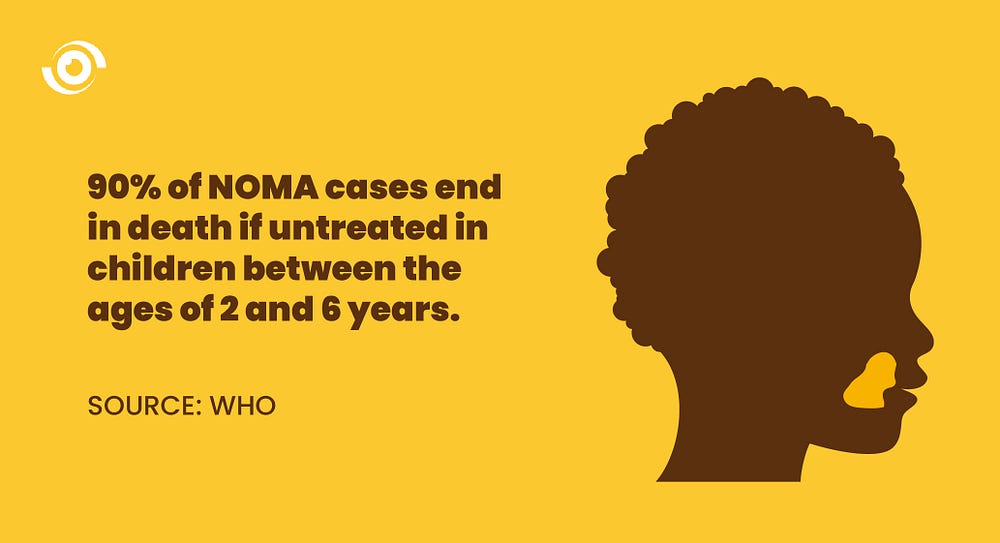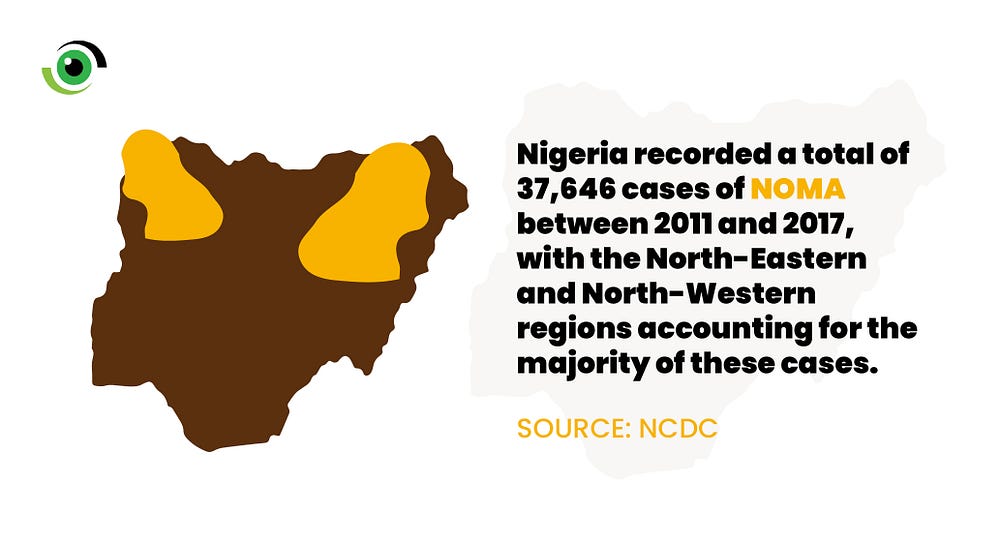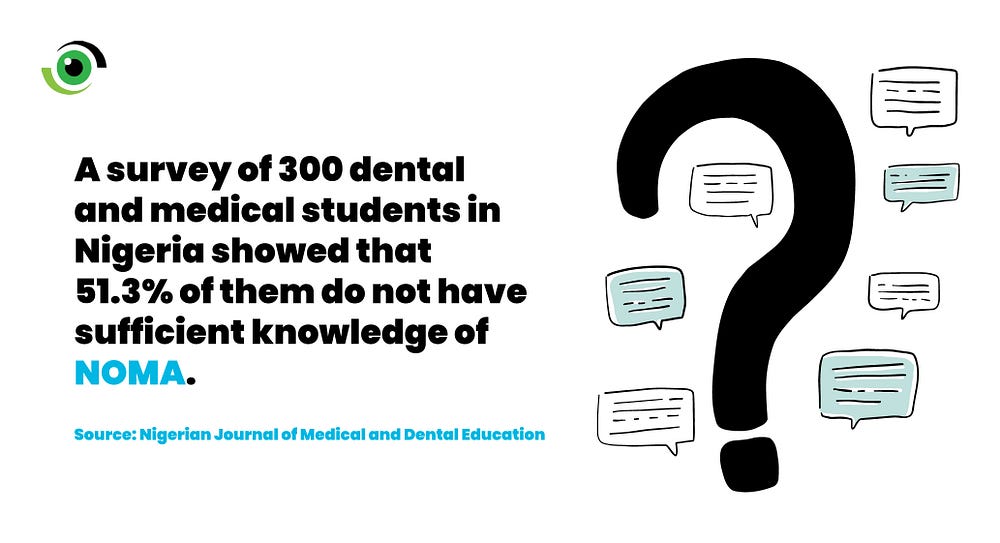A mysterious figure dressed all in black, she appeared to be invisible as she slipped through the Laraba (Wednesday) market crowd in my village in northern Nigeria. The only visible features were her eyes and her right hand which she used to support the veil that covered the lower half of her face. As she bent to speak to a trader, her veil slipped revealing a sight that burned itself into my 10-year-old brain. The lady’s mouth and nose appeared to be fused to her chin and there seemed to be no distinction between her nose and mouth. I knew children born with “tsagen lebe” (cleft lip), but this was different.
When I got home and described what I saw, my grandmother’s answer to my many questions was that the woman had suffered from “ciwon daji” (cancer) when she was five years old. Everyone in the village knew her. She had no husband, no children, and no living relative that they knew of. Her condition forced her to live in isolation.
Years later, I realised that wasn’t cancer but something equally devastating. Her disfiguration was a reminder of the destructive power of a disease called ‘noma’. Some communities in northern Nigeria call it ‘ciwon noma’ (noma disease). The woman I saw was a survivor of this disease. “We never saw a child survive the disease,” Grandma told me. The memory of that woman is a constant reminder of the devastation that noma can cause.
The World Health Organization (WHO) defines noma as a necrotising or flesh-eating disease that typically affects children between aged two to six. Its root causes remain unknown, however, malnutrition, poor oral hygiene, failed immunisation, and other social factors, such as poverty have been identified as contributing factors.

The non-communicable disease kills up to 90% of affected people, most of them live in poor communities in Africa. It begins as a sore on the gum and if left untreated, progressively destroys the mouth, nose, and facial tissues over time. Survivors live with physical and functional problems that make it difficult to speak, breathe, chew, and even see. As a result, they are stigmatised and find it difficult to function in society. Timely detection and treatment of noma is critical to avoid physical deformities and death.
Awareness as a vital factor

Findings of a recent cross-sectional survey of 300 dental and medical students in Nigeria, showed that 51.3% of the students do not have adequate knowledge of noma. This is a cause for concern, because in Nigeria, the disease has been prevalent for decades, with estimates indicating that the country has one of the highest burdens of noma, globally. Between 2011 and 2017, the Nigeria Centre for Disease Control (NCDC) reported a total of 37,646 cases of noma in Nigeria, with the North-Eastern and North-Western regions accounting for the majority of these cases. Unfortunately, accurate data on the true burden of the disease is difficult to obtain because reporting and surveillance of the disease has been poor.

“Moving the needle” for Noma in Nigeria
In 2017, the Federal Ministry of Health (FMoH) designated November 20 as an annual National Noma Day. Two years later, the National Noma Policy Document and the Triennial Noma Control Action Plan (2019–2021) was developed with the support of the WHO and approved by the National Council on Health in August 2019.
Furthermore, the federal government, in partnership with Noma Aid Nigeria Initiative (NANI) with support from Hilfsaktion Noma e.V., a non-governmental organisation based in Germany is accelerating the noma control activities in the country by constructing an 80-bed capacity Noma Treatment Centre within the grounds of the National Hospital in Abuja, Nigeria’s Federal Capital. The centre, which is projected for completion in the second quarter of 2023, will provide quality, specialised and free medical care to children who are affected by the disease.
Looking Ahead
According to Dr Tedros Adhanom Ghebreyesus, Director-General, WHO, in his address to commemorate World Neglected Tropical Diseases (NTD) Day 2023, “Neglected Tropical Diseases have become a little less neglected. Over the past decade the number of people requiring treatment for an NTD has dropped by 25 percent and 47 countries have eliminated at least one NTD”. Noma is a neglected disease and despite ongoing efforts in Nigeria, a lot more needs to be done.
Noma is yet to be classified as a neglected tropical disease (NTD). Experts believe that the inclusion of noma disease in WHO list of NTDs, will bring the required attention to the disease including funding for research. At the 74th World Health Assembly in 2021, resolutions passed on oral health included a request that the WHO Director-General “include Noma in the planned WHO 2023 review process to consider the classification of additional diseases within the NTDs road map 2021–2030”. This is a laudable move.
In addition to already deployed methods of tracking and reporting the disease, technology should be leveraged. The new WHO Skin NTD App is a means to quickly obtain information about the disease. Investment in public health and sanitation infrastructure as well as meeting nutrition targets and improving oral hygiene interventions for children living in high-risk areas is also critical.
To raise awareness among health workers, better diagnosis of noma should be integrated in medical and nursing schools in Nigeria. It should also be in-cooperated in the training health care workers at the primary health care and facility levels receive. WHO has developed online open access courses on noma for health workers in English and Hausa. This will ensure prompt diagnosis and referral to the Noma Treatment Centre in Abuja.
Community-Based Surveillance remains the bedrock of disease control and eradication. It is critical to closing the gaps in disease surveillance and response, as well knowledge gaps in rural areas. Although my grandmother is no longer alive, I believe that there are still people in rural communities around Nigeria, particularly in high burden states, with limited understanding and awareness of noma disease, what to do to prevent it and the need for timely detection and treatment. Sensitisation, surveillance and treatment interventions must be designed to ensure that the last mile is reached.

In the words of Dr Osagie Ehanire, Honourable Minister of Health, while commemorating National Noma Day in 2022, “Every civilised society is measured by the ability of the strong to take care of the weak. The continued existence of Noma has shown that the most vulnerable children in Nigeria are malnourished. We must step up our efforts to eradicate it”.


